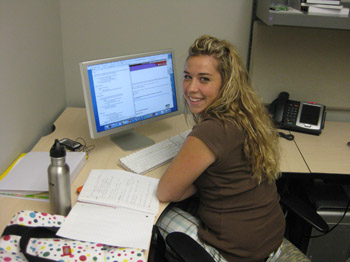May 25 - July 30

Public Response to the 10 May 2010 Norman, Oklahoma Tornado
Sarah Stalker, Heather Lazrus, Kristin Kulhman, Randy Peppler, and Kim Klockow
What is already known:
- Anonymous surveys have been a primary means of finding what the public does during a tornado warning and tornado event.
- Research has shown there are uncertainties that play a factor in decision-making in response to severe weather warnings.
- What the public's actions and reactions to tornado warnings and why those actions and reactions occurred is unknown.
What this study adds:
- In depth interviews of actions and reactions from the public in regards to the 10 May 2010 tornado that started in Norman, OK and dissipated just south of Pink, OK.
- Shows how these actions and reactions fit into the suggested categories on decision-making uncertainties.
- Tells how wanted lead-time may be more than the 'time' wanted, but a 'spatial' confirmation of the direction of the storm.
Abstract:
The purpose of this project is to gather initial actions and reactions from the public in response to the 10 May 2010 Norman, Oklahoma tornado. This is done in support of the National Severe Storms Laboratory's Warn-on-Forecast project for severe thunderstorm, tornado, and flash flood events. The tools and products that will be developed as part of the project are needed to improve warning for both the public and community stakeholders i.e. emergency managers, hospitals, and schools. This research study consisted of formally interviewing 6 individuals impacted by the May 10 storm and analyzing their responses. The majority of the interviewees did not feel any direct threat from the tornado during the early stages of storm development and advisories. Interestingly, with a longer lead-time promised by Warn-on-Forecast, most said they would still probably wait to obtain more information before taking any form of shelter or enact a safety plan. Most of the participants said it would be beneficial to see the expected track information Warn-on-Forecast will provide to help make their decisions on whether they felt the need to take safety measures. The results in this study will help to aid the National Severe Storms Laboratory in further development of the Warn-on-Forecast system with respect to public perspectives on longer lead times and other information needs.